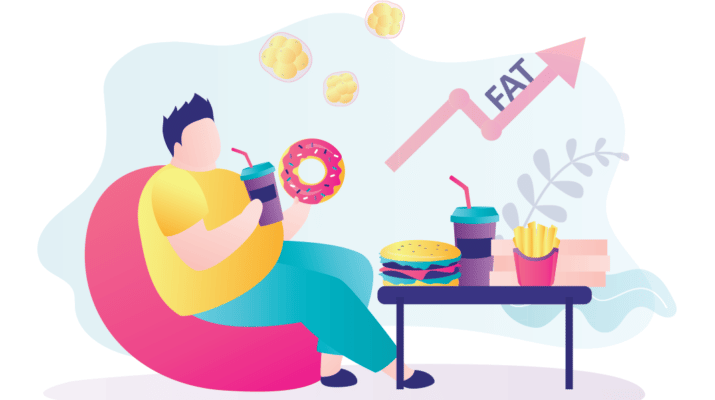By Deborah Jeanne Sergeant
Erie and Niagara rank among the least healthy in New York state, according to a recent report\
Of New York’s 62 counties, the County Health Rankings & Roadmaps 2022 (www.countyhealthrankings.org) funded by the Robert Wood Johnson Foundation, ranked Erie County as No. 46 in health outcomes. Niagara ranked 53rd.
The rankings were affected by health behaviors (tobacco use, diet, exercise, alcohol and drug use, and sexual activity), clinical care (access and quality), and social economic factors (education, employment, income, family and social support and community safety), and physical environment (air and water quality, housing and transit).
So, what could help Western New York rank better?
Brian DeLuca, physical therapist and director of physical therapy and impact sports performance at UBMD Orthopaedics & Sports Medicine, said that education on health starts in schools. “Parents also need to be accountable to set that benchmark. In Colorado, people look at ‘How much activity can I get in?’ Buffalo has little focus on activity.”
DeLuca would like to see more people become involved in group activities, which can increase motivation.
Andrea Langston, certified dietitian nutritionist and owner of Thrive Nutrition & Wellness, LLC at Bialek Chiropractic in Amherst, wants to see more focus on nutritional health, including among doctors.
“Doctors are trained in pharmaceuticals and that’s important, but there’s not much training in nutrition — not at all,” Langston said. “There’s a disconnect because the medical system is divided among the specialties. It’s the whole body. It’s all connected. Looking at the body in pieces can cause you to miss things.”
She would like to see more community members learn about nutrients and the gut microbiome, which comprises 80% of the immune system. Langston believes that cooking lessons, nutrition classes and other food-oriented programming in the community would help.
She also thinks that raised awareness of low-cost and free resources would improve health.
“People are so used to gyms you pay for,” she said. “The younger generation might not think to use a free community fitness center at a school. A lot of resources in community that used to be staples, like free meals at senior centers, people have moved away from them.”
The area’s numerous free access parks, hiking trails, community fitness centers and pools and other resources provide many opportunities for fitness. However, residents need to realize that physical activity is important to health, gain access to resources and learn how to use them.
“Access is one thing important to eating better,” said Mary Jo Parker, registered dietitian in private practice in Williamsville. “They talk about ‘food deserts.’ We need healthy things available. If there were more local farm to table, that might help people.”
She would like to see more widespread use of cold storage for things like root crops and apples to encourage greater availability of fresh fruits and vegetables through the winter. She wants more education available to the public about topics such as consuming more produce, how to find affordable healthful foods and how to eat healthfully.
“People don’t know how to read labels and see the serving sizes,” Parker said. “Nutrition education is important. The way to get the message through is making it more fun and accessible. Public service announcements for COVID-19 have been widespread, but not things like the way to be healthier is to exercise and eat healthier. People might need more concrete tips. A lot of people don’t think about ingredient substitutions.”
Kelly Wofford, office of health equity director at Erie County Department of Health, said that her office is working to help the public access health information easier, including a newsletter about health resources.
“Throughout the county, there are many assets,” Wofford said. “There are assets within communities within Erie.”
In addition to the newsletter, she encourages residents to ask friends and neighbors about resources such as where to exercise or where to find a food pantry. Wofford hopes her office can provide a connection between those in need and resources.
Beyond awareness, she wants to promote creative thinking about access.
“There are beautiful parks and trails, but do people have access to them?” she said. “Do people working several jobs to pay their rent have time to use these trails? It’s more than having nice things but having access to them. And it’s also about having the time and resources to be able to take advantage of those things a lot of those falls under social determinants of health and health inequities.”
For many people in poor health, lack of information represents a huge factor. Wofford recalled that while she was canvassing a community for a health survey, she met a person whose family members had all lost toes to diabetes early in life and felt pleased to be the first person who hadn’t.
“You’re a reflection of your environment,” Wofford said. “People don’t even know what health is.”
In addition, many of the resources available do not meet the health needs of the county. For example, many food pantries lack fresh foods and rely upon shelf-stable staples.
“There are a lot of well-meaning access points and services, but they don’t meet the true needs of the individual,” Wofford said.
She hopes that additional guidance from the county can help organizations improve the resources they offer.

